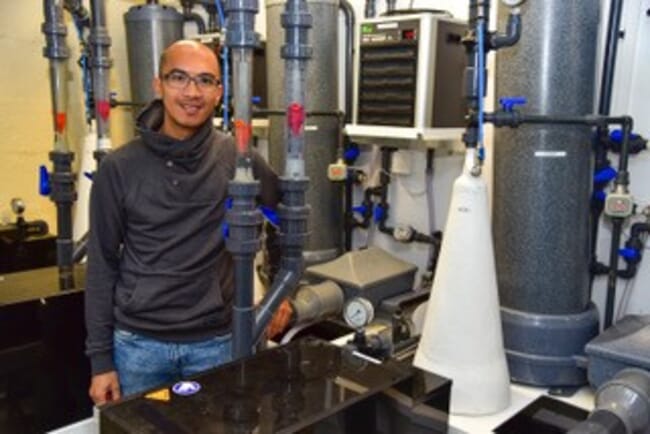
© David A Strand, Norwegian Veterinary Institute
Given the growing number of fish produced in RAS - whether as juveniles or for grow-out - it’s high time that the sector has RAS facilities, rather than traditional flow-through ones, to undertake challenge trials at its disposal.
It is for this reason that Nofima, in collaboration with Tromsø Aquaculture Research Station and The Arctic University of Norway, has established brand new RAS trials facilities. The conclusion after the first experimental trials is that the infection models worked very well and that the RAS trials can be carried out in less time compared to trials conducted in flow-through systems.
New protocols
Disinfection strategies have played a key role in the trials that have taken place so far. These are crucial to establish protocols for the disinfection of RAS facilities, and for how any disease outbreak should be managed.
“In the RAS trials, we have simulated, among other things, how pathogenic bacteria get into the RAS facilities. This allows us to study how disease develops in the fish, while at the same time we can investigate how and where the pathogens establish themselves and spread throughout the system,” says Carlo C Lazado, senior scientist at Nofima.
In previous reports, Nofima has pointed out that many RAS facilities in Norway and North America have disinfection protocols, but it is uncertain how effective these are if pathogens such as viruses and bacteria enter the system.
“Several trials conducted in the new RAS facility will provide us with knowledge about critical areas in the system where the pathogens potentially thrive. This knowledge will be crucial for us in developing risk assessment protocols in RAS, but even more importantly, in developing disinfection protocols that are effective following a disease outbreak,” says Lazado.
Speeding up, and fine-tuning, the process
The RAS facility in Tromsø is the first of its kind where this type of controlled bacterial infection trial on salmon has been reported.
“When we recently conducted a trial with the pathogen Yersinia ruckeri, we saw that disease developed faster than in flow-through systems. The fish were also susceptible to experimental infection at a different stage in the production cycle compared to what we have observed before. This provides more flexibility in infection trials. In addition, we will test virus infection in the system to see if the same tendencies are observed,” says Lill-Heidi Johansen, fish health scientist at Nofima.
“We now see that there are good opportunities to carry out rigorous trials in the new RAS facility that are even more relevant to the industry,” adds Johansen.



